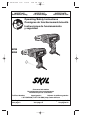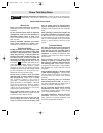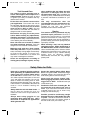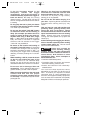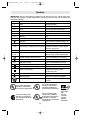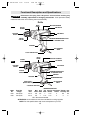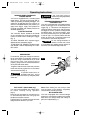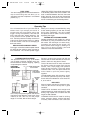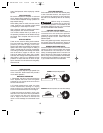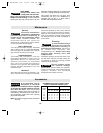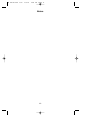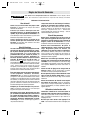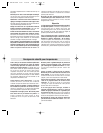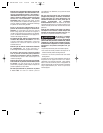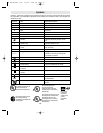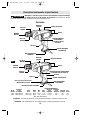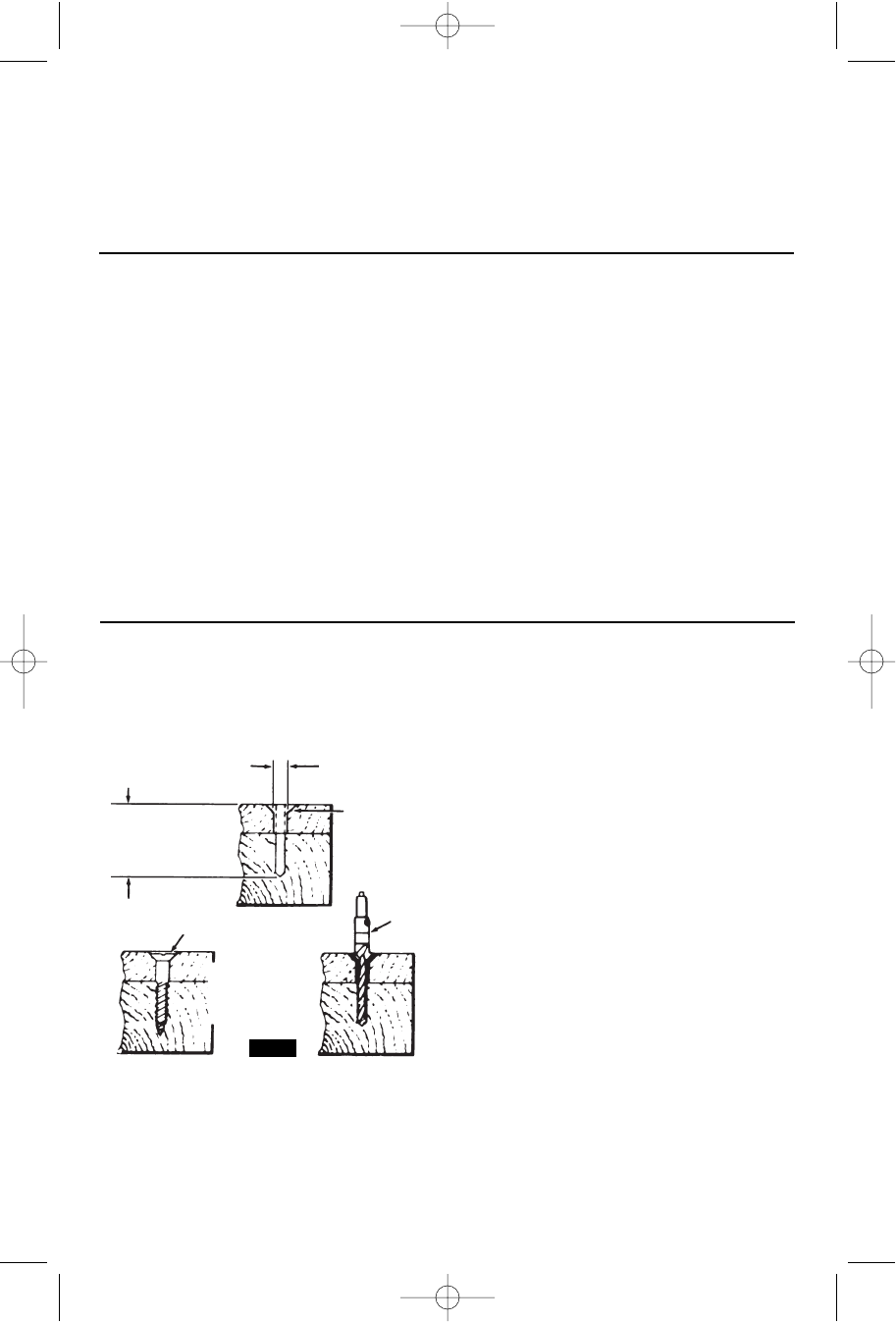
FASTENING WITH SCREWS
This procedure shown in (Fig. 4) will enable
you to fasten materials together with your
Drill/Screwdriver without stripping, splitting
or separating the material.
First, clamp the pieces together and drill the
first hole 2/3 the diameter of the screw. If the
material is soft, drill only 2/3 the proper
length. If it is hard, drill the entire length.
Second, unclamp the pieces and drill the
second hole the same diameter as the screw
shank in the first or top piece of wood.
Third, if flat head screw is used, countersink
the hole to make the screw flush with the
surface. Then, simply apply even pressure
when driving the screw. The screw shank
clearance hole in the first piece allows the
screw head to pull the pieces tightly
together.
The adjustable screw drill accessory will do
all of these operations quickly and easily.
Screw drills are available for screw sizes No.
6, 8, 10 and 12.
DRILL BITS
Always inspect drill bits for excessive wear.
Use only bits that are sharp and in good
condition.
TWIST BITS: Available with straight and
reduced shanks for wood and light duty metal
drilling. High speed bits cut faster and last
longer on hard materials.
CARBIDE TIPPED BITS: Used for drilling
stone, concrete, plaster, cement and other
unusually hard nonmetals. Use continuous
You will extend the life of your bits and do
neater work if you always put the bit in
contact with the work before pulling the
trigger. During the operation, hold the tool
firmly and exert light, steady pressure. Too
much pressure at low speed will stall the
tool. Too little pressure will keep the bit from
cutting and cause excess friction by sliding
over the surface. This can be damaging to
both tool and bit.
DRILLING WITH VARIABLE SPEED
The trigger controlled variable speed feature
will eliminate the need for center punches in
hard materials. The variable speed trigger
allows you to slowly increase RPM. By using
a slow starting speed, you are able to keep
the bit from “wandering”. You can increase
the speed as the bit “bites” into the work by
squeezing the trigger.
DRIVING WITH VARIABLE SPEED
Variable speed drills will double as a power
screwdriver by using a screwdriver bit in the
drill mode. The technique is to start slowly,
increasing the speed as the screw runs
down. Set the screw snugly by slowing to a
stop. Prior to driving screws, pilot and
clearance holes should be drilled.
DRILL LEVEL
Your tool is equipped with drill level located on
top of the housing that will allow you to
accurately enter the workpiece in a horizontal
position
(Fig. 1).
USING THE LEVEL: Place drill bit where hole is
to be drilled, position drill so the bubble in the
level is centered between the lines, then start
drilling the hole, once the bit has entered the
workpiece check from time to time to be sure
the bit is maintaining the horizontal position.
-8-
2.Drill same diameter
as screw shank
3.Countersink
same diameter
as screw head
1.Drill 2/3 diameter
and 2/3 of screw
length for soft
materials, full
length for hard
materials
Screw
Apply a slight
even pressure
when driving
screws
Adjustable
Screw
Drill
FASTENING
WITH SCREWS
FIG. 4
Operating Tips
SM 2610912724 3/03 3/6/03 2:00 PM Page 8



